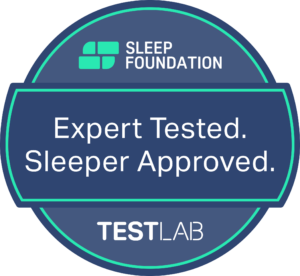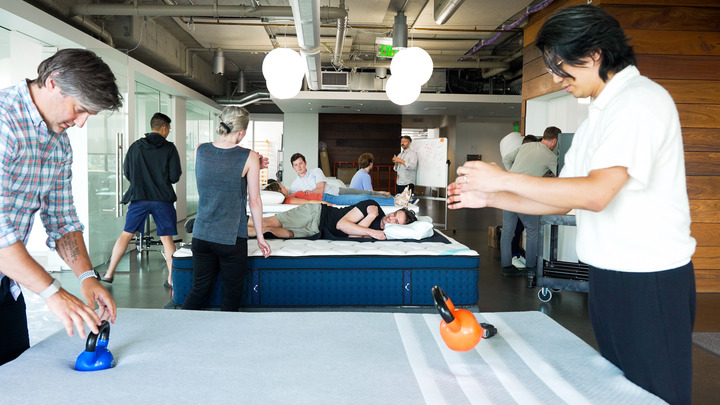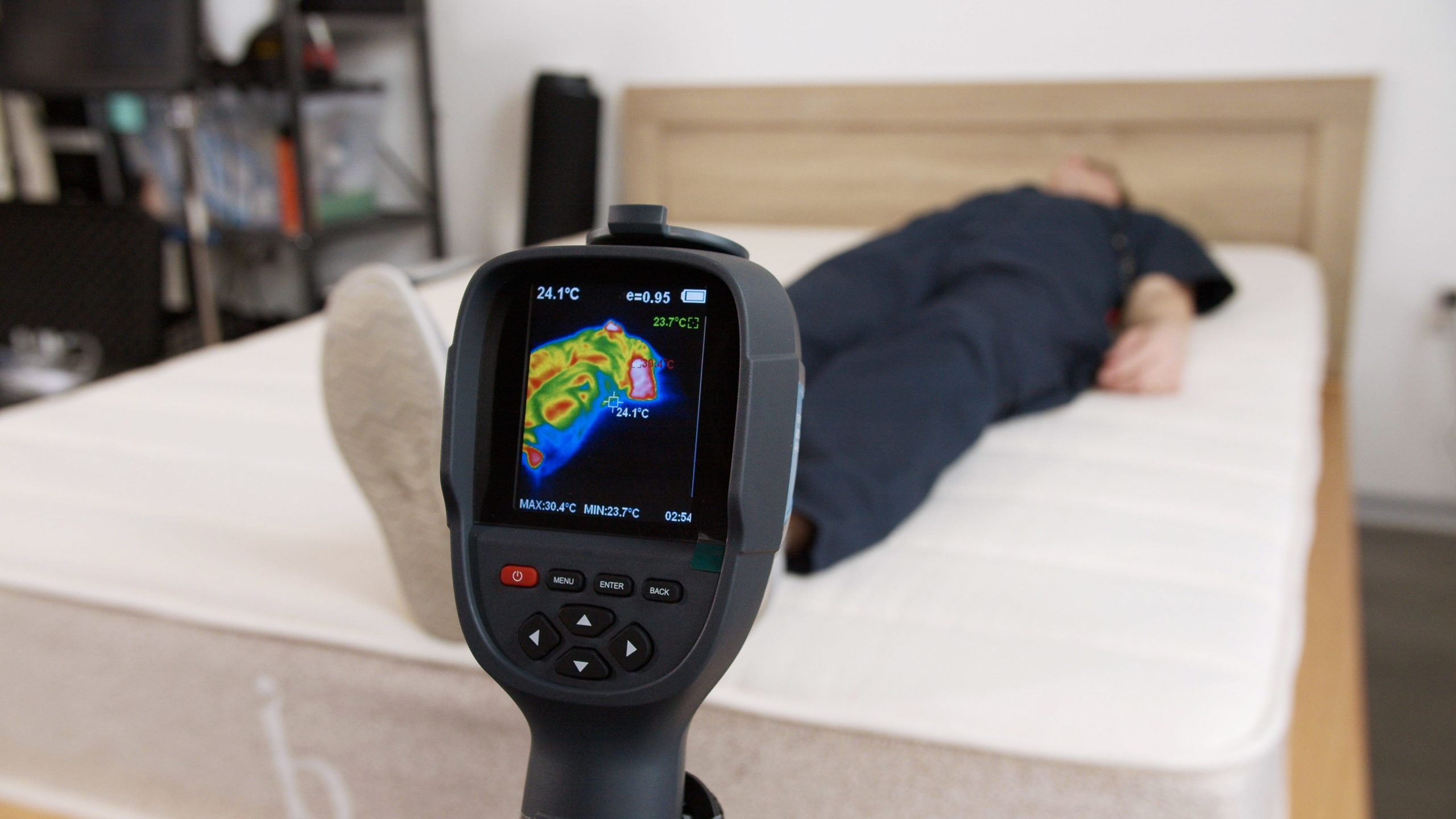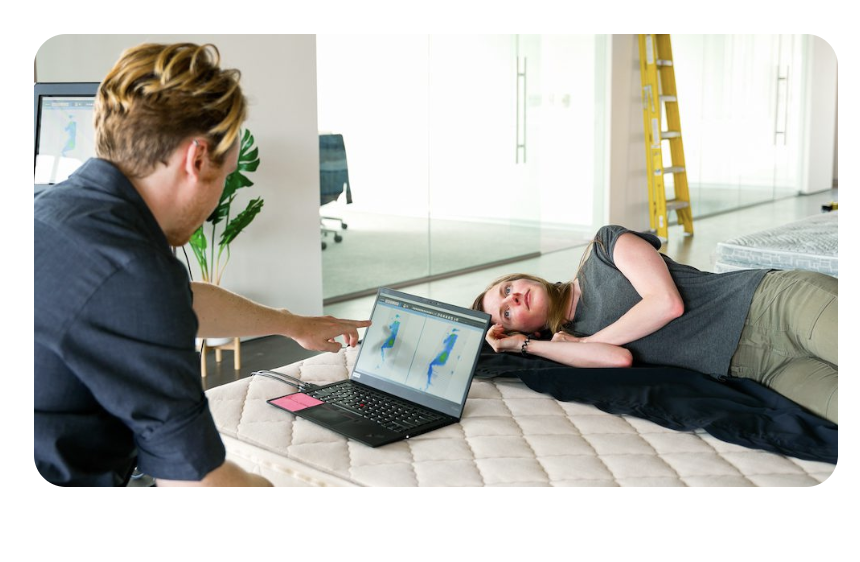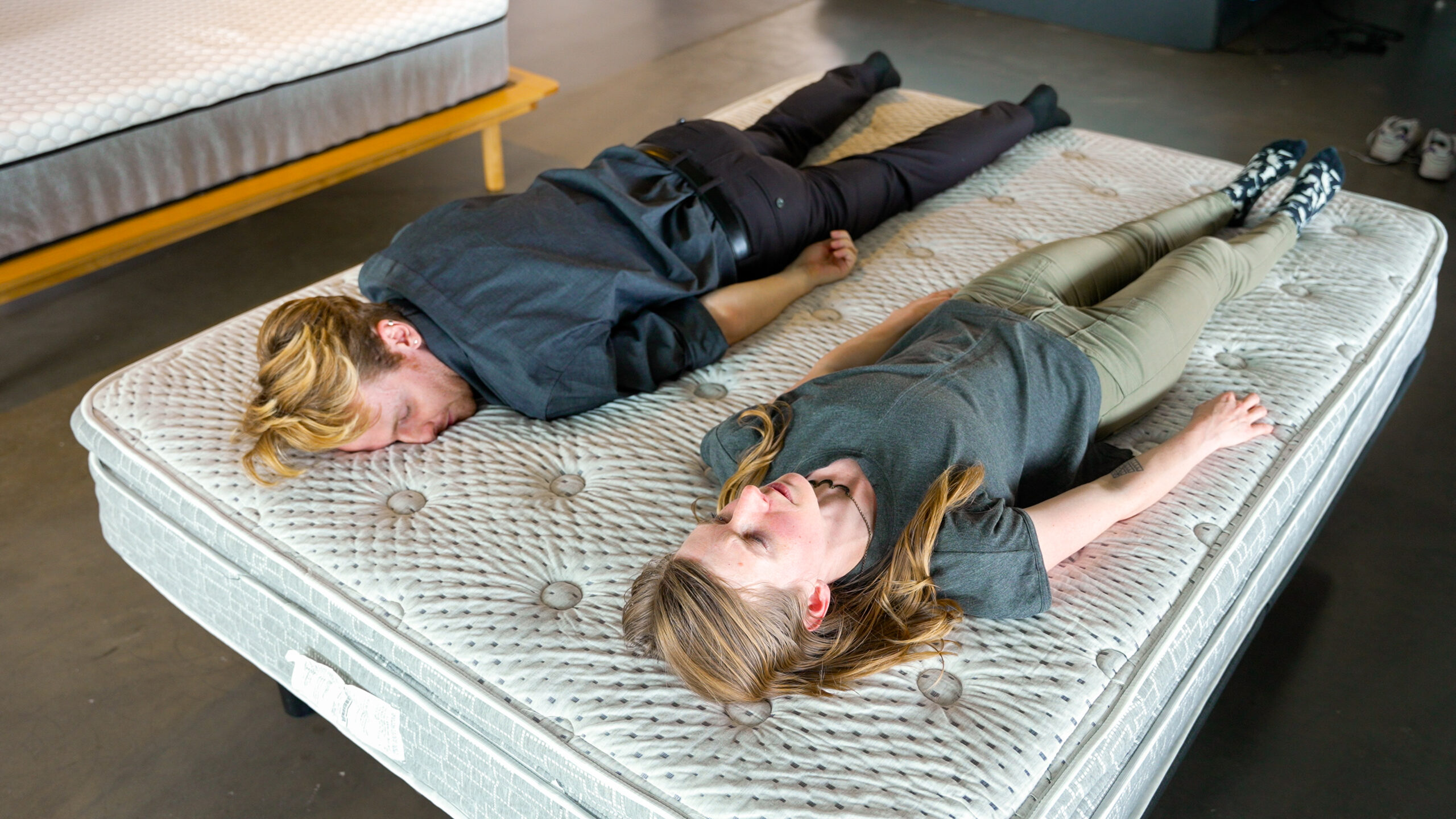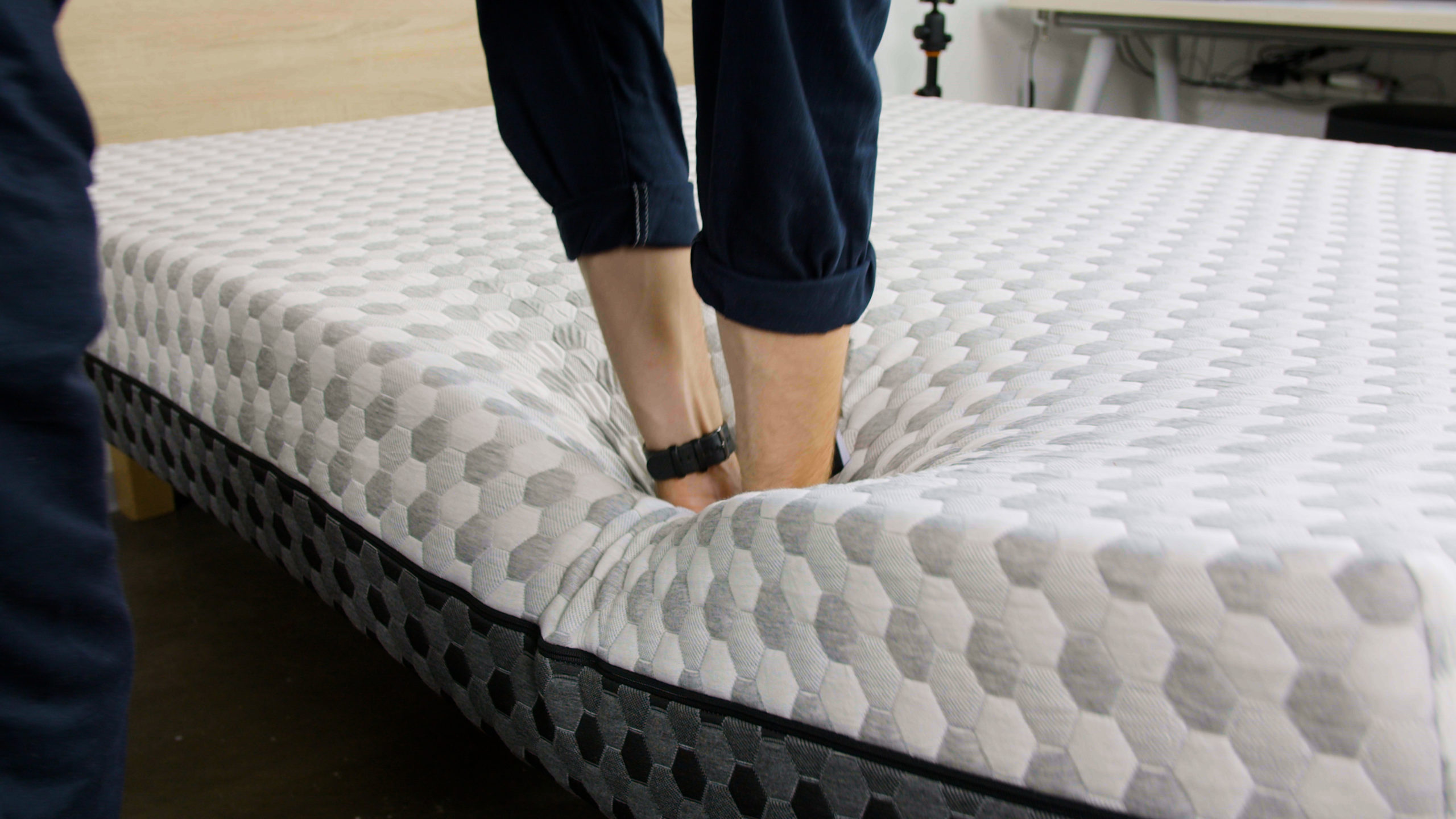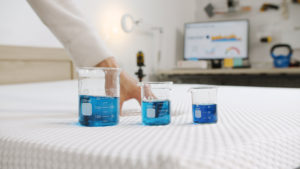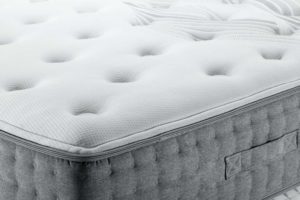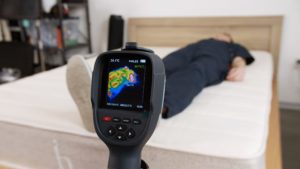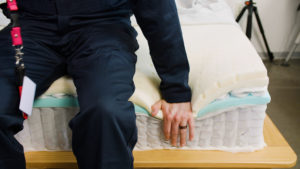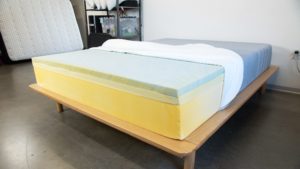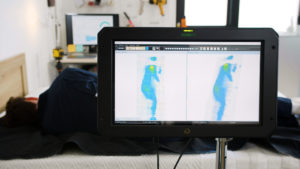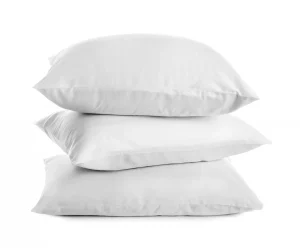Getting a good night’s sleep is hard enough without having to worry about things like foam density and coil tension. That’s why our product review team has tested more than 4,000 sleep products (including about 2,000 mattresses) in our Seattle-based Test Lab over the past decade.
As product experts and self-proclaimed sleep nerds who find joy in feeling fabric between our fingers, monitoring real-time sleep data, and (yes!) jumping on beds, we stay up-to-date on the science of sleep and sleep-tech trends to provide data-backed recommendations.
In our Test Lab you’ll find tech to monitor things like heat retention, motion isolation, and pressure mapping, and you’ll also see the occasional sleep expert like Dr. Michael Breus drop by to adjust a firmness rating and offer pro tips on improving the sleep environment.
We know sleep is highly subjective, but our goal at the Test Lab is to help take the guesswork out of your sleep journey so you can be your best-slept self.
Located at the headquarters for our parent company Sleep Doctor, the Test Lab is stocked with hundreds of sleep products and state-of-the-art testing equipment. We evaluate each product using the same set of performance criteria, using a scale of 1 to 10 to rate performance.
How We Rate Sleep Products
Our overall ratings factor in qualitative insights from sleepers of different sizes and sleep positions, manufacturer specifications like firmness, price, and durability, and quantitative measurements across the six performance categories illustrated below.
First, a few notes regarding manufacturer specifications. We reference firmness ratings from mattress companies, but designate our own ratings given performance criteria. We measure firmness on a scale of 1 (softest) to 10 (firmest). We generally don’t recommend beds that rank below a 2 or above an 8, as they aren’t great options for most sleepers. Learn more in our guide to mattress firmness.
When it comes to durability, the average lifespan of a mattress is 6-8 years. While we don’t keep mattresses in the Test Lab for that long (we do bring them home for monthlong stretches, however), we do look closely at the quality of materials used in the construction of the bed to make general assumptions about its longevity. You can read more about how long a mattress should last on this page.
The products featured on our site have MSRPs that fall within ranges we would expect to see across similar categories and models. Actual pricing may fluctuate based on deals and sales.
How We Test Mattresses
Over the years, we’ve heard tons of different things from sleepers about what they look for in a bed, and the majority of it boils down to feel. Is it supportive? Does it sleep hot? Can I easily get in and out of it? Since not everyone can or wants to hop down to their local mattress retailer to lay on beds, we created the below criteria to test and quantify how a bed feels.
For each of the tests, our foremost considerations are sleeping position and body weight, as the amount and distribution of weight on a mattress can affect how the mattress feels. Most individuals who weigh more than 230 pounds will have similar needs for a mattress in terms of firmness, thickness, and comfort layers. This holds true for sleepers under 130 and those who fall between that range.
Learn More: How We Determine Body Weight Ratings
We rate each mattress we review for all sleeping positions (back, side, and stomach) on a scale of 1 (poor) to 10 (excellent). If you are a combination sleeper, assume that you need a mattress that scores highly in each position you sleep in.
Motion isolation refers to how much movement you can feel from the other side of the bed. A mattress that rates highly in this category allows you to keep sleeping when your partner is moving around or gets up before you do. We measure motion isolation with a vibrometer. This measures the intensity of vibrations across a mattress as a tester moves between sleeping positions.
Learn More: How We Determine Motion Isolation Ratings
While some luxury and high-tech beds offer active cooling or heating features, this test measures how well the materials inside the mattress stay temperature neutral throughout the night. This is especially important for sleepers who tend to wake up sweating. We measure this by placing a heating element on the mattress for an extended period of time, and then using a heat gun to measure how much heat the mattress retains after 5 minutes.
Learn More: How We Determine Temperature Control Ratings
Your body creates natural pressure points, like your hips and shoulders, where your weight is more concentrated. When you lay on a mattress, one that relieves pressure well will conform (contour) to your body, which helps to reduce pain and promote restful sleep. We test for pressure relief by placing a pressure pad on top of the mattress, having a tester lie on it, and measuring the amount of pressure on their hips and shoulders.
Learn More: How We Determine Pressure Relief Ratings
The average mattress needs to be replaced after roughly 7 years of continuous use. That said, some mattress materials resist wear and tear better than others and won’t sag, bottom out, or develop indentations as quickly. To test mattress durability, we conduct a detailed overview of the bed’s construction and evaluate how each individual layer contributes to its overall longevity. We also revisit mattresses we’ve tested over the past decade and compare their performance today to previous ratings they’ve received from our team over the years.
Getting in and out of bed should be easy. If a bed rates poorly in this category, it generally means it’s not a good choice for people with chronic pain or those who toss and turn a lot. We measure ease of movement through a number of subjective tests, and we also look at a mattress’s response to pressure changes by placing a 15-pound kettlebell on its surface for a set amount of time and measuring how quickly the bed regains its original shape.
Learn More: How We Determine Ease of Movement Ratings
Many people like to sleep close to the edge of their bed or use it as a place to sit to get ready in the morning, so it’s important that a mattress can hold your weight and doesn’t collapse around the edges. To test for edge support, testers sit and lay around the perimeter of the bed to see if compression increases over time. Then we place weights around the edges and measure the distance that the edge compresses downwards.
Learn More: How We Determine Edge Support Ratings
Meet Our Product Testing Team
Sit in on one of our spirited roundtable discussions about our favorite sheets, and you’ll see that we mean it when we say we’re sleep nerds. Members of our team have been on the research, design, and manufacturing sides of mattresses, pillows, and copious other sleep products for many years, so we know what to look for when it comes to value and quality. In addition to in-house product testing, we seek out sleeper and industry-expert feedback to confirm our impressions and ultimately decide our ratings.

Colin Simpson
Head of Product Research

Logan Foley
Editorial Director

Jeremy Klein
Senior Product Testing Manager

Danny Noyed
Senior Product Editor

Jackson Lindeke
Executive Product Director

Mary Fenton
Head of Product Content

Brad Nehring
Senior Product Manager


